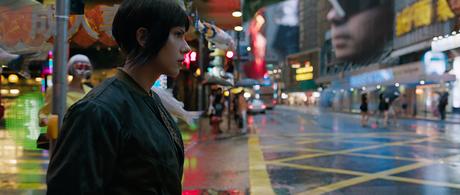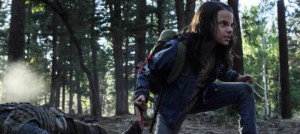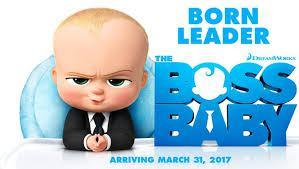
When was the last time you looked up the list of new movies coming out in April? Just don't. It's a depressing exercise, one that forces you to then look up which new Netflix shows drop in April because, dangit, you want something good to watch. After Hollywood stuffed everything into March as the unofficial earliest start to the summer blockbuster movie season in history it has pretty much yielded all of April to The Fate of the Furious. Surely one of March's various blockbusters would have been better served coming out in late April.
Then again, maybe not. At the start of March, I observed that the month was so overstuffed with big budget movies and notable mid-budget movies that we were looking at yet another month where Hollywood's recent habit of stack scheduling leads to a handful of winners but a bunch of losers. A funny thing happened, though. Almost every single blockbuster, from Logan to Boss Baby, did better than expected. The actual number of blockbusters proved to be less important than the sequence in which they were released, with a R-Rated comic book movie (Logan) followed by a PG-13 monster movie ( Skull Island) followed by a PG family movie ( Beauty) followed by a PG-13 action movie ( Power Rangers) followed by an R-Rated sci-fi movie ( Ghost in the Shell) and PG animated movie ( Boss Baby), with Spring Break sandwiched somewhere in-between.
Of those, only Ghost flat out bombed, although competition and poor word-of-mouth quickly caught up with Power Rangers.
So, what have we learned?
1. It's Either Go Big or Go Home (or Be As Good As Get Out)
The exceptions to the rule were Get Out, Jordan Peele's February-released micro-budget indie that is now one of the highest grossing horror movies in recent memory, and The Shack, a faith-based filmed which held its own on the way to a respectable domestic gross ($53m).
2. Quality Still Wins Out, But Nostalgia Helps
The exception here is Power Rangers, which critics despised but opening weekend audiences kind of liked. However, even there quality eventually won out, causing Power Rangers to plummet a staggering 64% in its second weekend, turning what had been a promising box office start into a suddenly desperate need to play big in Japan and China or else risk being yet another one-and-done wannabe franchise starter.
It's tempting to look at the month and conclude that nostalgia was the currency of the day. Logan drew on our two decades of good will toward Hugh Jackman's Wolverine. Skull Island reminded us how much fun a King Kong movie if it doesn't take itself too seriously. Beauty and the Beast's a sometimes shot-for-shot remake of a beloved animated classic that's not actually that old. Power Rangers owed much of its big opening to people my age who grew up on the original Mighty Morphin Power Rangers in the early 90s.
There's certainly plenty of merit to that, but nostalgia alone cannot sell or carry a movie. If it did, Power Rangers wouldn't have plummeted on par with a DC comic book movie, and Ghost in the Shell wouldn't have bombed quite as hard as it did. It doesn't always happen this way, but in March 2017 it was the best movies that managed to thrive. Merely inviting us to remember that one thing we used to like back in the day doesn't quite cut it.
3. Except For When You're the First New Animated Movie In Over a Month
Thus, I am Jack's complete lack of surprise to see Boss Baby massively outperform expectations, debuting to $49m this weekend instead of the $30m which had been predicted. Now, to simply write off its success as "families are sheep, and Hollywood again gave them a new animated movie to flock to" is too simplistic. Alec Baldwin's post-Trump SNL trendiness certainly helped as did the clever Beauty and the Beast-specific trailer which aired before Beauty opening weekend screenings. Plus, the central metaphor - to an only child, suddenly getting a younger sibling feels like you're in a corporation which has just been taken over by a domineering new boss - is relatable and easily communicated through trailers.
Yet, really, a $49m debut is the going average for a DreamWorks movie these days. Home had a nearly identical opening ($52m) on the same exact weekend two years. The only recent DreamWorks movie to not at least make $41m in its opening weekend is 2014's Penguins of Madagascar, a franchise spin-off which bottomed out domestically ($25m debut, $83m total) but slayed overseas ($283m). So, it didn't really matter that Boss Baby was neither liked by critics (49% RottenTomatoes) nor particularly loved by audiences (just 65% RT reader's rating). It more mattered that it was there, and came from a brand known to deliver at least a minimum level of quality.
Now, for some nonsense reason Sony has its animated Smurfs reboot due out next week.
4. 'Twas Alien that Killed Life
Maybe. The ho-hum reviews likely suggest otherwise. However, Life was always at a disadvantage coming out in the same year as Ridley Scott's Alien: Covenant, meaning for months people have been seing the trailers for both movies and mixing them up.
This, in the end, turned into a classic case of release date wars. Life was originally supposed to come out May 26, 2017 opposite the new Pirates of the Caribbean (which, according to CinemaCon attendees, doesn't totally suck). However, then Covenant was moved up from August 4 to May 19, more or less forcing Life to move. There's no way Sony could let their Alien knock-off come out the week after an actual Alien movie, but they still wanted to be first to market. So, they took their chances in March, underestimating, as did everyone else, the big business of Logan, Skull Island and Beauty and the Beast and enduring success of the similarly R-rated horror flick Get Out. Life only cost $58m to make. So, it's no big loss. But in a more traditional March Life would have, um, found a way. In this March of peak blockbuster, though, it had to be something truly special to stand out, and it just wasn't.
5. Whitewashing, Not So Much Good For Business (except for when it is)
But what about Doctor Strange, one of Marvel Studio's highest-grossing origin story movies? Or the critically derided Iron Fist, which actually became the most binge-watched premiere on Netflix this year? How can we conclude that Ghost in the Shell and The Great Wall are signs that whitewashing is bad for business when there are two recent success stories which suggest otherwise? Perhaps the greater takeaway is that the more indebuted a project appears to be to Asian culture (such as Great Wall and China and Ghost in Shell and its futuristic Tokyo and anime flourishes) the tougher it is to sell to American audiences, regardless of what the main character looks like.

